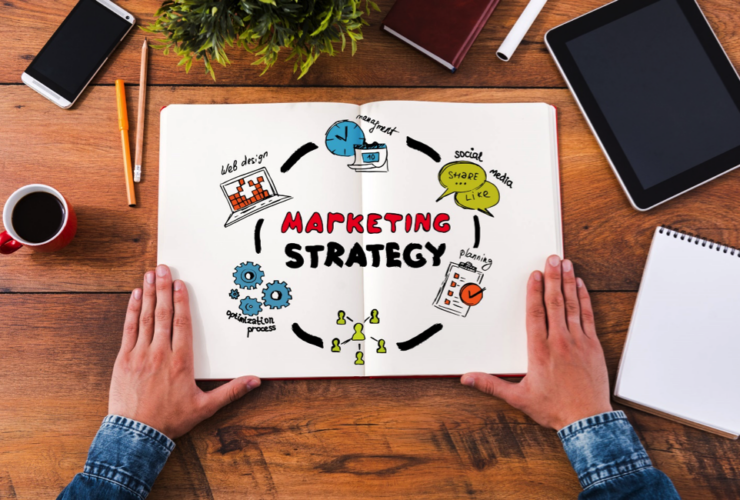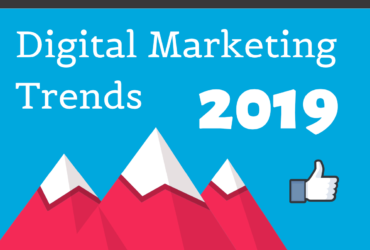Programmatic Media
With the digital advertising landscape constantly becoming more competitive, it’s extremely imperative to be informed on what brands are doing to continue to captivate their audiences and woo new customers. It’s more important than ever to be relevant to your messaging. Programmatic Advertising is a new digital marketing trend that holds a highly effective solution to deliver the right messages to the right people.
Programmatic Advertising is a hot topic in digital marketing. In fact, IAB estimated by 2018 that programmatic could be up to 80% of marketing spend. Our friends at Centro estimate by 2017, Programmatic media spend in the U.S is going to be at $27 Billion. When first learning about it, it can seem confusing and overwhelming. NDMR wants to lessen the confusion and break it down for you with a high-level overview so you can understand the trend too.
After our San Diego Agency, New Dimension Marketing, and Research, spent a sunny morning at SDX’s Programmatic Media Workshop, we heard various perspectives from digital marketing professionals on the ad buying, publishing and agency side of programmatic. Traditionally, ad buying involved RFPs, insertion orders as well as people who had to heavily be involved in the negotiation process. Programmatic ad buying eliminates this and in essence, uses machines to buy ads. This is efficient for the advertising community as it eliminates mundane tasks humans have to perform, decreases human errors and gives us humans the chance to focus on more complex campaigns and campaign optimizations.
Types of Programmatic
Programmatic Direct/Automated Guaranteed/Programmatic Guaranteed
This type of programmatic is automated buying and selling using reserved inventory which is directly booked in the publisher ad server. It is done at high priority settings with fixed rates. Pricing and/or delivery of impressions is pre-negotiated and guaranteed rather than as an auction. What makes this programmatic? First of all, negotiation and fulfillment is automated and completed through platforms rather than manually. Also, since the deal exists in the same platform, you can make sure you’re not targeting the same audience on your “open market buys”, bringing efficiency to your overall buy. An advertiser would only use this type of deal when delivery is most important, and they are planning on applying a limited amount of targeting and optimization to the buy, but still want the benefits of programmatic listed above. The technologies used for these sales bring flexibility, automation, and ease for publishers and media buyers.
Preferred Deal
A form of Programmatic Direct with a fixed CPM negotiated directly between the publisher and the advertiser, but here, the advertiser retains a greater degree of control to decide which impressions they want to buy, via optimization levers or data. Ad Exchange sellers offer inventory to buyers before the inventory is available to others looking to buy in the Open Auction. Sometimes inventory is exclusively offered through Preferred Deals. Buyers can also wait until the Open Auction to bid. However, if you bid on a preferred deal you cannot also compete for the same impression in the Open Auction.
Private Marketplace/PMP/Private Auction/Closed Auction
These deals are more exclusive as an invitation-only auction with unreserved inventory. Typically, the most coveted publishers offer their ad inventory to a certain group of advertisers. This works as an open auction in pricing, typically with a floor price, and involves real-time bidding which depends on what advertisers are willing to pay. This type of programmatic allows advertisers to have a good sense of control of where their ads run.
The DL on Real Time Bidding
Real-Time Bidding (RTB) and Programmatic Buying are not interchangeable. RTB is one type of programmatic which means automatic bidding, selling and purchasing impressions for Display. This is all done as an auction. It involves several parties including a DSP (demand side platform), advertiser, publisher, and ad exchange. This demand-side platform helps advertisers decide which ad impressions to purchase. The DSP automates the ad purchase process, and this all happens milliseconds before a web page loads with the best bid serving the viewer the winning ad, making the process seamless. The DSP bids on impressions made available from an ad exchange.
As a Paid Search Manager, I found similarities between Paid Search and real-time bidding within Programmatic. Lorenzo Moreno of The Trade Desk said it best, “Instead of bidding for keywords, you’re bidding for certain times of the day.” When asked about why we should use programmatic he said, “You get to decide which impressions are most valuable to you”.
In Conclusion
There are multiple methods to execute your programmatic ad deals and it’s a growing part of our industry that is continually expanding and becoming increasingly prevalent for brand marketers as well as direct response campaigns. While Programmatic evolves, it’s an essential tool and trend to learn about to connect with and move audiences. After all, who doesn’t want to spend advertising dollars more efficiently and effectively?





